Vegetable Lists
-
Cultivation techniques of Mini Carrot

1. Variety sources finger-shaped carrots and spherical carrots are new varieties of carrots introduced from Nagoya, Japan in 2003 by the vegetable Institute of Inner Mongolia Academy of Agriculture and Animal Husbandry Sciences. Trial planting are all pocket mini carrots, which can be used as specialties, raw food and dish platter decoration. Second, characteristics 1. Refers to.
2018-07-31 -
Control methods of main diseases of radish
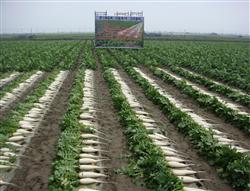
Radish is an annual or biennial herb of the genus Cruciferae, and it is one of the main root vegetables. Radish has a large absorption of nitrogen, phosphorus and potassium, so it is a high-yield crop with high fertilizer demand. For each production of 4000kg radish, it is necessary to absorb nitrogen 8.5kg, phosphorus pentoxide 3.3 kg, potassium oxide 11.3.
2018-07-31 -
Sweet potato clever topdressing rapid expansion
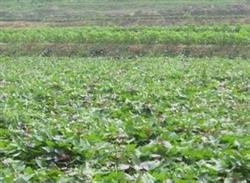
Sweet potato is a potassium-loving crop. In its fertilizer requirements, nitrogen accounts for 30%, phosphorus accounts for 10%, and potassium accounts for 60%. In the growth process, potassium deficiency in early sweet potato will appear internodes, petioles become shorter, leaves become smaller; potassium deficiency in late old leaves vein serious lack of green, and gradually fall off, seriously affecting the formation of late yield. The method of applying potassium fertilizer is: ...
2018-07-29 -
Sweet potato planting is fastidious
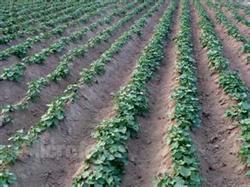
On sweet potato, the distribution of adventitious buds was the most in the head, the second in the middle, and the least in the tail. When arranging potato seeds horizontally or obliquely on the seedbed, master the principle of head-up, tail-down, back-up and belly-down, which can increase the number of seedlings. If the large and small potato pieces are arranged in the same seedbed, the big potato emerges slowly, grows little, the potato seedling is stout and can be arranged.
2018-07-29 -
How to prevent and control the split skin of sweet potato
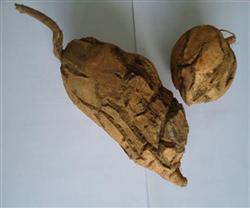
The diseases that cause the cracking of sweet potato are blister disease and nematode disease. Prevention and control measures: first, select disease-resistant varieties. Second, establish disease-free planting land and cultivate disease-free and strong seedlings. Seed potatoes were disinfected with warm water of 50 ℃ ~ 54 ℃ for 10 minutes. Third, carry out soil disinfection. Use 80% dibromochloropropane 1.5 kg / mu to water 100g / mu.
2018-07-29 -
Sweet potato drought-resistant cultivation tips

The method of leaving 3 leaves takes 6~7 potato seedlings, only leaves at the top are left when planting, the rest are buried in the soil together with the leaves, and the buried part should be tightly sealed. The buried sand soil absorbs heat quickly and the temperature is high. When planting potato seedlings, the tips and leaves exposed to the ground should be covered with soil. The buried soil thickness is more than 3 cm.
2018-07-29 -
Five measures for High yield cultivation of Sweet Potato
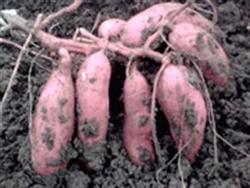
The selection of excellent varieties of high-quality potato seedlings can not only improve the survival rate of planting and early fruiting, but also significantly increase the yield of sweet potato, which is generally more than 10% higher than that of weak seedlings. The selection and purchase of sweet potato seedlings should be considered from three aspects: appearance, height and weight. High-quality sweet potato seedlings generally have large and thick leaves and dark green leaves.
2018-07-29 -
The high yield of sweet potato depends on fertilization.
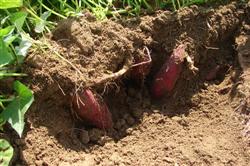
The demand of sweet potato for nitrogen, phosphorus and potassium varies with different growth stages. Nitrogen fertilizer was absorbed more in stem and leaf growth period, less in root expansion period, less in stem and leaf growth stage, and more in root expansion period, while potassium fertilizer was absorbed more than nitrogen and phosphorus from planting to harvest.
2018-07-29 -
What problems should be paid attention to when turning over sweet potato seedlings?
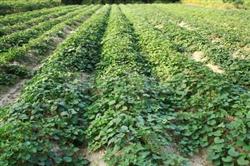
First, in the case of sufficient water, there are secondary roots at the stem nodes, and the secondary roots can absorb a large amount of nutrients and water, so that the vegetative growth is exuberant, the vines grow excessively, and the reproductive growth is inhibited, and the potato grows slowly. At the same time, the secondary root will also grow small potato pieces, resulting in a lack of nutrients, the phenomenon that "no one has enough to eat".
2018-07-29 -
What is the difference of fertilization between lettuce field and cooked vegetable field
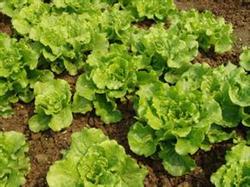
Leaf lettuce, also known as lettuce, is a 1-2-year-old herb that can form leaf balls or tender leaves in the genus Asteraceae. Lettuce is rich in vitamins and minerals, so it is easy to obtain pollution-free products without pesticides in the process of cultivation, which is more and more welcomed by consumers, and the planting area is increasing year by year. One.
2018-07-27 -
Several common diseases of lettuce and their control methods
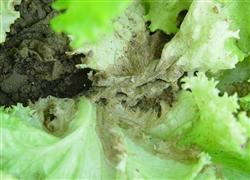
Lettuce produced in greenhouse in winter is prone to a variety of diseases. Several common diseases and control measures of lettuce are summarized as follows: Sclerotinia sclerotiorum mainly harms the base of the stem, the disease is yellowish brown to brown water stains at the beginning, and then extends to the whole stem. cause the stem to rot or develop upward to cause leaf rot, and finally the plant withered.
2018-07-27 -
Fertilizer requirement characteristics and fertilization skills of heading lettuce
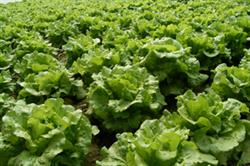
The characteristics of fertilizer requirement of heading lettuce is a herbaceous plant of Asteraceae lettuce, which is suitable for slightly acidic clay soil or soil with rich organic matter and strong ability of water and fertilizer conservation. The growth cycle of heading lettuce can be divided into germination stage, seedling stage, rosette stage and heading stage. It is generally believed that every 1000 kilograms of lettuce needs to absorb 3.7kg of nitrogen.
2018-07-27 -
Cultivation techniques of lettuce in winter
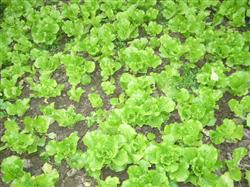
Varieties were selected to cultivate mid-and late-mature heading lettuce with strong cold resistance. The cultivation date can be planted in solar greenhouse from mid-late November to late January and harvested from the first and middle of January to early March. Fertile sandy loam was selected for seedling breeding, which was fined and made into flat beds. Then apply sifted high-quality manure every 10 square meters.
2018-07-27 -
Cultivation techniques of Artemisia annua in greenhouse in early spring
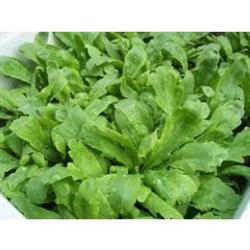
It is better to select varieties with strong cold resistance, and it is generally necessary to use 1.5-2kg per mu. Three to five days before sowing, the seeds were soaked in warm water of 30 ℃ for 24 hours. After washing and drying, they were placed under the condition of 15: 20 ℃ to accelerate germination. The seeds were washed with warm water once a day, and the seeds could be sown after germination. Fertilize the whole.
2018-07-27 -
High-yield cultivation techniques of Chinese Cabbage in Summer and Autumn
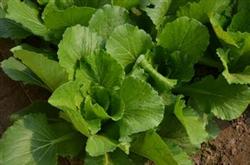
Due to the high temperature in summer and the serious occurrence of diseases and insect pests, it is difficult to cultivate pakchoi, so attention should be paid to strengthening field management. Weeding between seedlings when the seedlings begin to pull the word "ten" for the first time, it is appropriate to go to the seedlings sooner rather than later. When the seedling has 4 true leaves, the second seedling, between weak seedling and diseased seedling, at the same time combined with the market situation.
2018-07-25 -
Key points of planting techniques of Chinese cabbage in summer
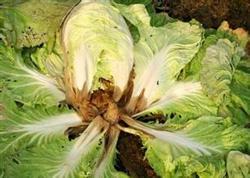
Symptoms of soft rot of Chinese cabbage: 1. The disease mainly occurs after the heart of Chinese cabbage. Generally invade from the wound at the base of the vegetable gang, forming a water-immersed infiltration area, and then gradually expand, and become light grayish brown, the tissue is sticky, soft and rotten, accompanied by a smelly smell, called "rotten gourd" or "rotten pimple". The sick department can.
2018-07-25 -
How to fertilize and water Chinese cabbage
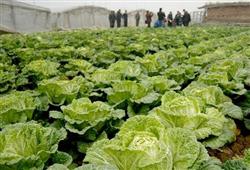
From the perspective of the whole growth period of Chinese cabbage, it has to go through three stages: seedling stage, rosette stage and heart stage. Chinese cabbage absorbs less nutrients at seedling stage, accounting for only 10%, and rosette stage accounts for 30%. During this period, production should control water and fertilizer, especially nitrogen fertilizer, so that Chinese cabbage leaves grow slowly, which is also called squatting seedling stage. It can't be caused by too much moisture.
2018-07-25 -
How to water ginger in summer
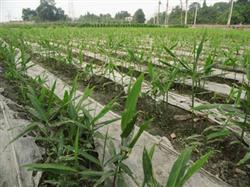
Ginger has different requirements for watering in different growth periods. The bottom water must be thoroughly watered when sowing, and the first water is not started until the emergence of seedlings reaches about 70%. After watering this water, it is often necessary to keep the soil moist to prevent the soil surface from hardening and affecting seedling emergence. It is appropriate to irrigate small water in the early stage of seedling stage, and see you in the soil after pouring.
2018-07-24 -
Causes and Control of Rotting Ginger Seedling Death
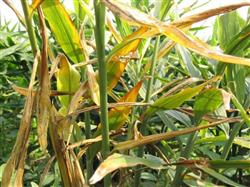
Ginger planting is a good project for farmers to increase their income, but the phenomenon of rotten ginger and dead seedlings often occurs in production, and ginger farmers cannot prescribe the right medicine. Experts believe that there are several reasons for rotten ginger to die. 1. Ginger blast is caused by seeds and soil bacteria, and prevention and control have not kept up. Prevention methods are as follows: 1...
2018-07-24 -
Ginger management should be scientific
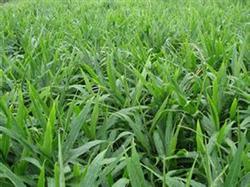
Hedgerow shade gives rise to warm ginger, but is not resistant to strong light and heat. Therefore, after planting, corn stalks with a height of 70 cm and 80 cm were inserted 12 cm to the south of the ginger ditch and woven into a flower hedge, which was slightly inclined to the north by 10 degrees to 12 degrees, so that the surface of the ginger ditch was shaded to facilitate the growth of ginger seedlings. The fertilizer absorption of ginger is very strong in different stages, and the whole growing period is very strong.
2018-07-24
